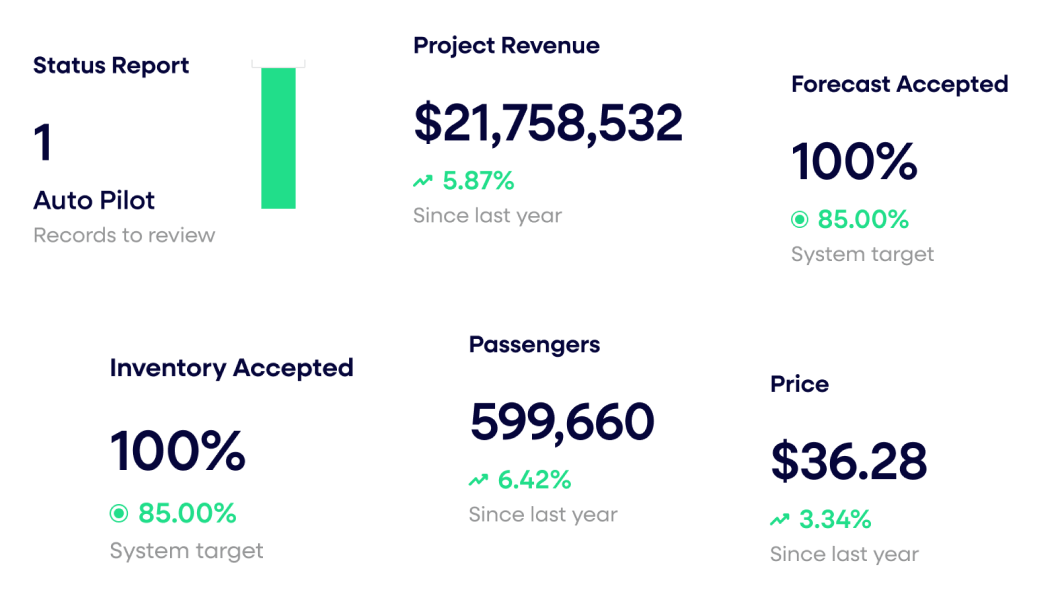5 Best Practices for Implementing AI-Powered Pricing

AI pricing isn’t plug-and-play. Success requires the right foundation, clear processes, and a culture of adoption. When done well, it drives real impact — from higher margins and stronger sales compliance to faster decisions in a volatile market. Here are five best practices to help businesses unlock maximum value from AI-powered pricing.
- Start with Clean, Contextual Data
The foundation of every effective AI pricing system is data integrity. If the data is incomplete, outdated, or irrelevant, the outputs will be too.
High-quality data refers not only to its accuracy, but also to its relevance, with well-defined ontology objects and corresponding behaviors. This includes transaction history, customer behavior, cost inputs, and external signals like competitive pricing or macroeconomic conditions. At Revenue Analytics, AI models are developed using fit-for-purpose analytics, ensuring recommendations are tailored to industry realities rather than generic algorithms.
- Ensure Explainability
AI will only be trusted, and adopted, if users understand how recommendations are made. Black-box models create resistance among sales, finance, and leadership teams.
See how AI is transforming pricing to drive even stronger profits.
That’s why explainability is critical. Pricing recommendations should come with clear rationale, logical pathways, and easy-to-interpret outputs and should have contextual insights to help users act with clarity and confidence.
When teams can see why a recommendation supports business goals, alignment and adoption follow naturally.
- Maintain Human Oversight
AI doesn’t replace human expertise, it amplifies it. While AI excels at analyzing massive datasets and identifying pricing opportunities, people bring the strategic context that machines can’t.
Continuous human oversight ensures:
- Strategic nuances are factored into recommendations.
- AI models evolve through feedback and real-world outcomes.
- Pricing decisions remain aligned with organizational goals and market realities.
This partnership between human judgment and machine precision delivers the best outcomes.
- Drive Cross-Functional Alignment
Pricing doesn’t live in a silo. It impacts finance, sales, marketing, and operations. For AI-powered pricing to succeed, all teams must be aligned around the same strategy.
Accessible dashboards with cross-department KPIs, decision-support tools, and clear communication are essential. When all stakeholders are operating from the same trusted data, it reduces friction, improves collaboration, and ensures pricing is used as a strategic growth lever.
- Build Continuous Feedback Loops
Markets evolve. Customer behavior shifts. Business goals change. That’s why effective AI pricing demands continuous adaptation rather than a one-time deployment.
Embedding feedback loops ensures:
- Models remain responsive to real-world changes.
- Frequent overrides or process breakdowns highlight where improvements are needed.
- Pricing recommendations get smarter and more effective with every cycle.
This creates not just short-term wins, but compounding ROI over time.
Final Takeaway
AI pricing success isn’t about turning on a tool; it’s about embedding intelligence into the heart of how your business operates. When implemented effectively, companies see measurable impact: higher margins without sacrificing volume, stronger sales compliance, and revenue teams that spend less time wrestling spreadsheets and more time driving strategy.
With the right foundation, explainability, human oversight, cross-functional alignment, and continuous feedback loops, AI-powered pricing transforms from a tactical lever into a true competitive advantage.
👉 Download our white paper AI-Powered Pricing Optimization: Driving Smarter, Faster, and More Profitable Decisions to explore how leading companies are applying these best practices and seeing measurable ROI.
Last updated on November 11, 2025


